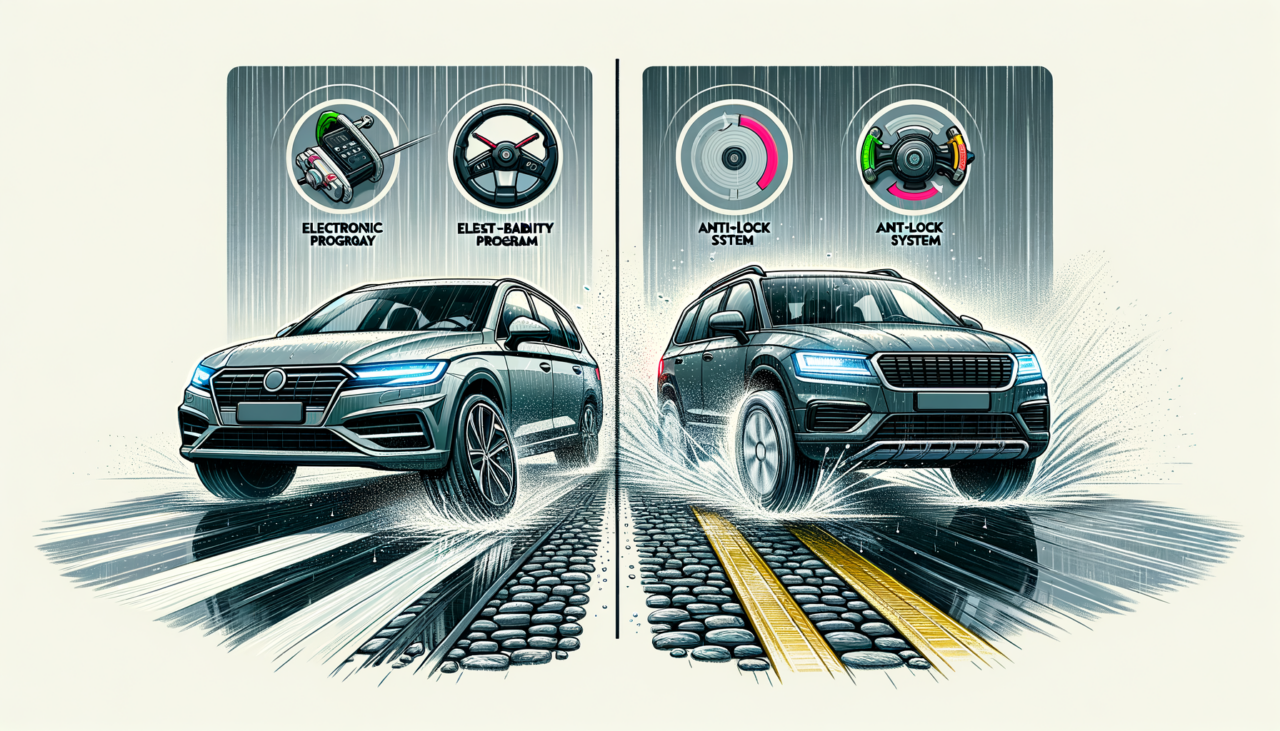ESP vs. ABS: Navigating the Road with Confidence
In the world of automobiles, safety is paramount. It’s like the Nigerian saying, “The person who doesn’t know where the rain began to beat them cannot say where they dried their body.” Understanding your vehicle’s safety features is crucial. Today, we dive into the intricacies of two vital safety technologies: Electronic Stability Program (ESP) and Anti-lock Braking System (ABS). These systems are akin to the seasoned drivers of the road, guiding and protecting you when the ride gets bumpy. Let’s embark on this journey of discovery, comparing ESP and ABS to help you make informed decisions.
Comparative Table: ESP vs. ABS
| Feature | Electronic Stability Program (ESP) | Anti-lock Braking System (ABS) |
|---|---|---|
| Primary Function | Maintains vehicle stability and control | Prevents wheels from locking up during braking |
| Operation Mechanism | Utilizes sensors to monitor driver input and vehicle dynamics | Uses sensors to monitor wheel speed and modulates brake pressure |
| Activation Conditions | Engages during loss of traction or potential skidding | Activates during hard or emergency braking |
| Components | Includes ABS, traction control, and yaw sensors | Comprises wheel speed sensors, electronic control unit, and hydraulic valves |
| Safety Enhancement | Prevents oversteering and understeering | Reduces stopping distance and maintains steering control |
| Driving Conditions | Effective on slippery roads, curves, and evasive maneuvers | Effective on wet, icy, or uneven surfaces |
| Cost Implication | Generally more expensive due to complexity | Typically less expensive than ESP |
| User Experience | Seamless intervention, often unnoticed by drivers | Noticeable pulsation in brake pedal during activation |
Characteristics of Electronic Stability Program (ESP)
Electronic Stability Program (ESP), also known as Electronic Stability Control (ESC), serves as the vigilant guardian in your car, ensuring that you stay on the straight and narrow, even when the road conspires against you. ESP is like the wise elder who knows the many paths and warns you before you stray too far. Here’s what makes ESP stand out:
-
Integrated Safety Network: ESP is not a lone ranger; it works in harmony with other systems like ABS and traction control. It’s the orchestra conductor, ensuring all components play in unison to maintain harmony on the road.
-
Proactive Protection: Unlike reactive systems, ESP steps in before things go sideways—literally. It predicts potential loss of control and intervenes by applying brakes to individual wheels or reducing engine power.
-
Enhanced Control: Whether you’re navigating a sharp corner or making an evasive maneuver, ESP is your steadfast ally, preventing oversteering and understeering, much like a trusted guide steering you clear of pitfalls.
-
Sophisticated Sensing: Armed with yaw sensors, ESP constantly assesses your vehicle’s movement and compares it with your steering input, ensuring your car goes where you intend.
-
Seamless Experience: ESP operates quietly in the background, offering peace of mind without interrupting your driving experience. It’s the silent helper, always vigilant yet unobtrusive.
Characteristics of Anti-lock Braking System (ABS)
The Anti-lock Braking System (ABS) is the seasoned expert in emergency scenarios, ensuring that you don’t skid into trouble. It’s like a good friend who stops you from making rash decisions, keeping you grounded when things get slippery.
-
Wheel Lock Prevention: ABS is designed to prevent wheel lock-up during sudden braking, allowing you to maintain steering control. It’s like the firm hand that keeps you from slipping when the ground is wet.
-
Shorter Stopping Distances: By modulating brake pressure, ABS helps reduce stopping distances on slippery surfaces, giving you the confidence to halt safely in emergencies.
-
Pulsating Feedback: When activated, ABS provides a pulsating sensation in the brake pedal, signaling its intervention. This tactile feedback is akin to a gentle reminder that you’re in safe hands.
-
Versatile Application: ABS is effective across various conditions, whether you’re on wet roads, icy paths, or uneven terrain, ensuring your vehicle remains responsive and under control.
-
Cost-Effective Safety: Compared to more complex systems like ESP, ABS is generally less expensive, making it a practical choice for enhancing vehicle safety without breaking the bank.
In conclusion, choosing between ESP and ABS is like choosing between two wise counselors—both invaluable, yet distinct in their expertise. ESP offers comprehensive stability, ensuring you remain on course, while ABS focuses on braking safety, preventing skidding even when the road gets slippery. As the Yoruba proverb goes, “Wisdom is not like money to be tied up and hidden.” Make a wise choice, and let these systems guide you safely through every journey. Whether you prioritize the all-encompassing protection of ESP or the focused assurance of ABS, understanding these technologies ensures you’re well-prepared for whatever the road may bring.

Comments (0)
There are no comments here yet, you can be the first!